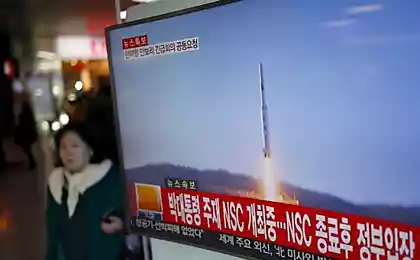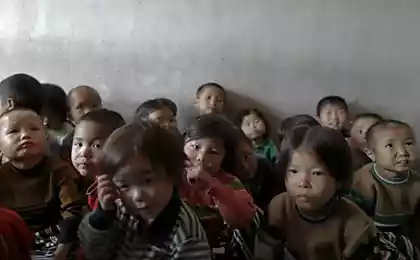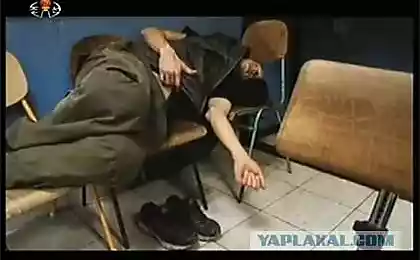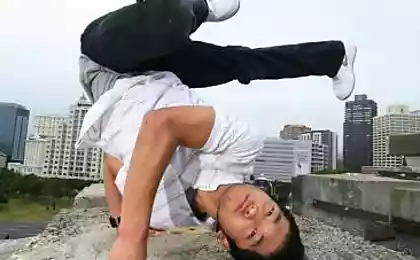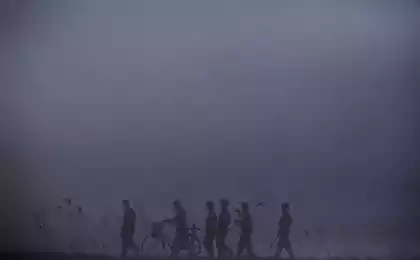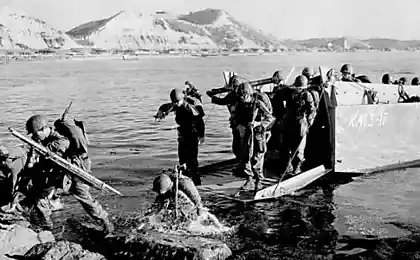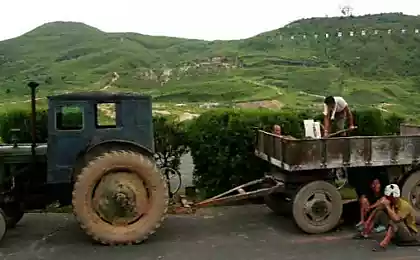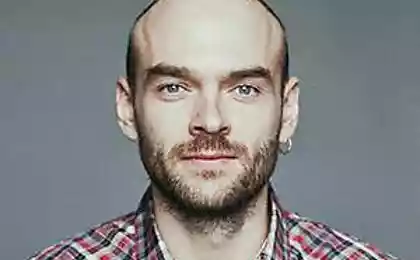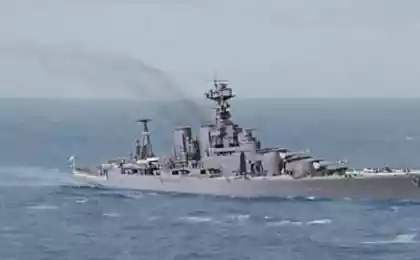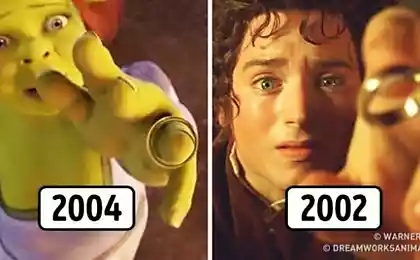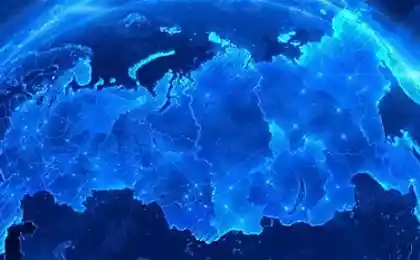1710
North Korea (48 photos + text)
North Korea’s recent nuclear weapons test has once again drawn the world’s attention to this small state. Ukrainian expert Vitaly Kulik visited North Korea a few weeks ago and presented a detailed report on what North Korea is today. In our opinion, the story turned out to be very interesting and fascinating.
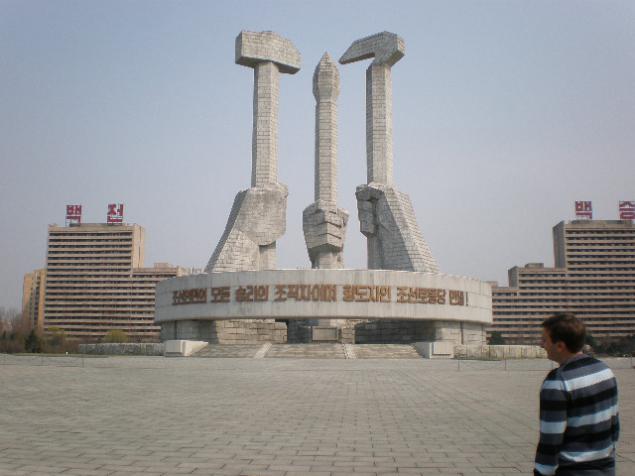
Vitaly Kulik. Good afternoon, we begin our expert meeting. The fact is that recently I was lucky, I was in North Korea and the Russian Far East. Hence the name of such a meeting is “Will Russia Hold the Far East?” What we have seen is evidence of important new trends in the development of Russian regions, which will affect global security and regional security. Starting with North Korea, I will give you a short presentation of our vision of what is happening in North Korea and the prospects for resolving the conflict and the situation in the future.
There is a certain set of myths about North Korea, which are produced by the international media, that it is a closed country, that there is Stalinism, that there is complete control of the authorities over the life of society, that there are no forms of self-expression and self-realization.
Let's start with the pictures, and I'll explain what and how.
In the image above, an interesting point, because it symbolizes the unity of the three classes of Korea: the worker, the peasant, and in the middle is a brush - a symbol of the intelligentsia.
North Korea in general. The thing is, what North Korea is like now is a bit like the spirit and style of the Soviet Union. Even, rather, the time of the forties and fifties with a certain modification.
This thirty-eighth parallel is the building that separates North Korea from South Korea. These barracks are the venues for conferences and meetings between South and North Korea, the thirty-eighth parallel.
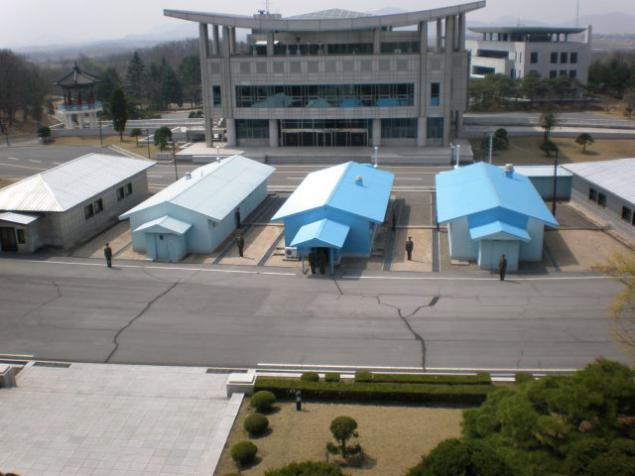
Well, let's probably take a look at the pictures first, and then I'll tell you what's going on.
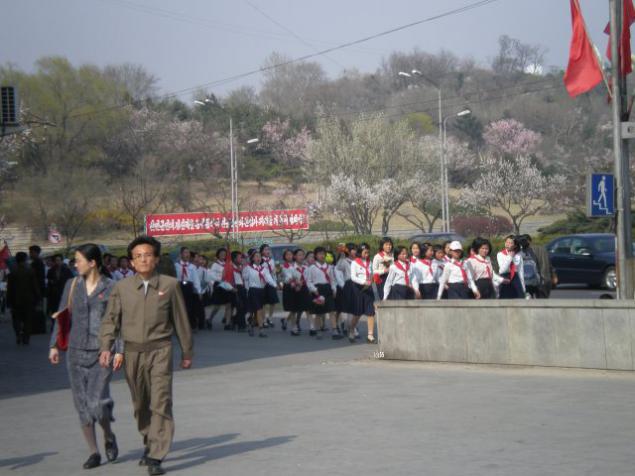
This is a pioneer detachment, that is, there are pioneers, Komsomol members, and now there is the Kim Il Sung Youth Union, and a pioneer organization. As in our old days, the only difference is that people who have passed the school of Pioneer and Komsomol organizations move up the career ladder faster, they are appointed to positions faster, and functionaries are one of the driving elements of North Korean society.
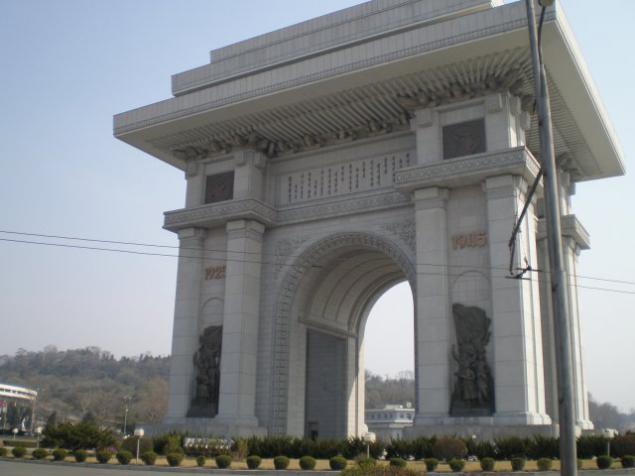
It is an arch dedicated to the revolutionary struggle that began in 1925, first the revolutionary activities of Comrade Kim Il-sung, and until 1945, the year of the liberation of Korea.
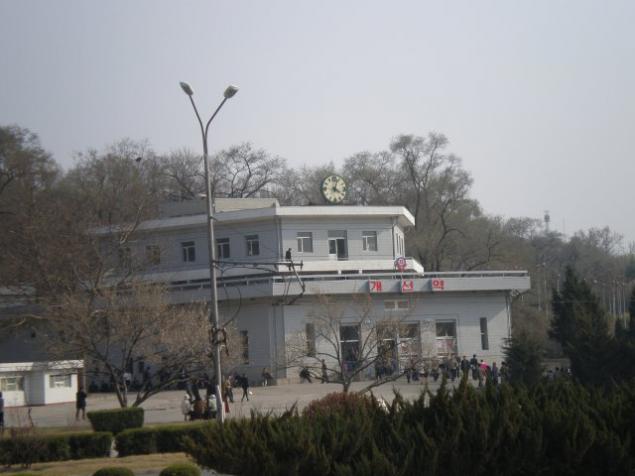
This is the subway entrance. The subway is developed, of course, not Kiev scale, but the cheapest in the world is five won. If we take into account the market rate of won and 2600 won for one dollar, then I do not even dare to say what it is a hundredth or a thousandth cent. Free, actually.
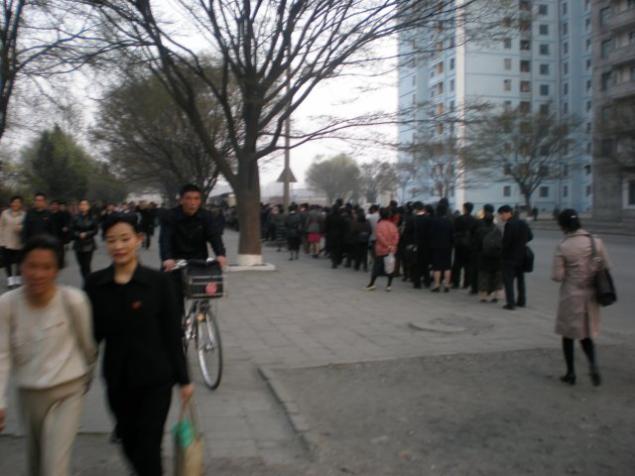
These are transportation lines. There are no shuttles there, trolleybuses are made by hand, since there is no press, so they are a little so dented. When I asked why trolleybuses have such roofs, they explained to me that, you know, there is no press in Korea, so everything is done manually, since the basis of the Juche ideology is self-reliance.
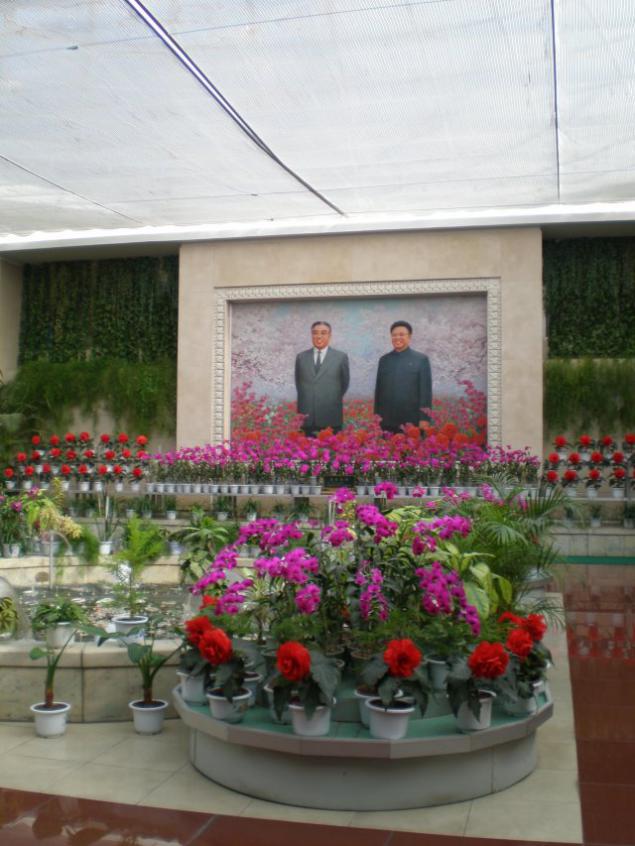
This is an exhibition of flowers, there are two kinds of flowers. These are the flowers of Kimirsenhwa and Kimchenirhwa, the small flowers are Kimirsenhwa, and the large flowers are Kimchenirhwa. The history of flowers is very interesting because the flowers were brought by two Juche supporters in Indonesia and Japan. Kimirsenhwa was brought by a revolutionary who lived in Indonesia during Suharto’s time, he bred this flower and gave it to comrade Kim Il Sung. But after Suharto came to power, the flower disappeared and only recently was found again and returned to North Korea. And now it is the symbol of Juche and the symbol of comrade Kim Il-sung. Kimchenirhwa brought the Jucheist out of Japan, a Japanese who gave the flower to comrade Kim Jong-il.
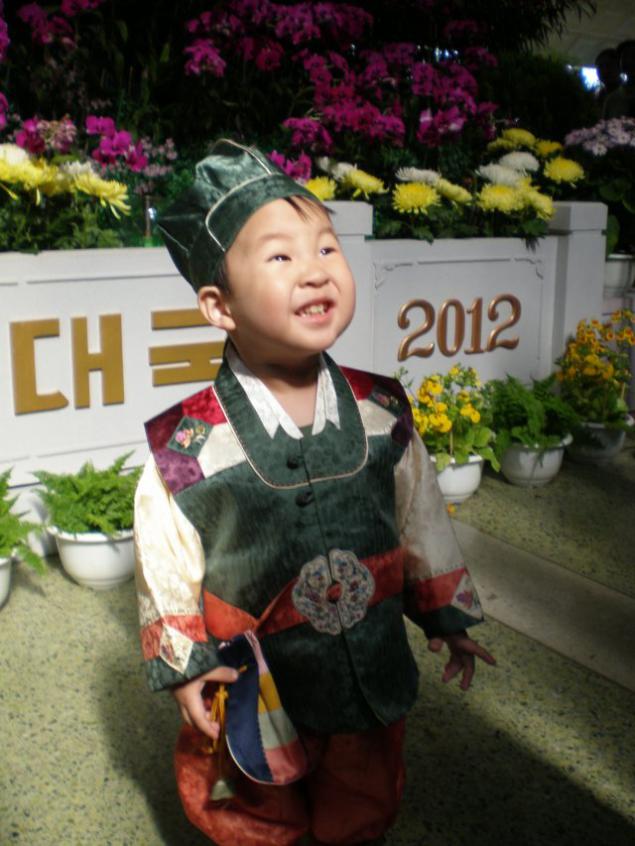
This is a young Korean boy in national clothes, there is a date - 2012. The year 2012 is the date when North Korea should become a powerful socialist state with nuclear weapons and a space fleet. We are holding Euro 2012, and they are building a powerful Korean state there.
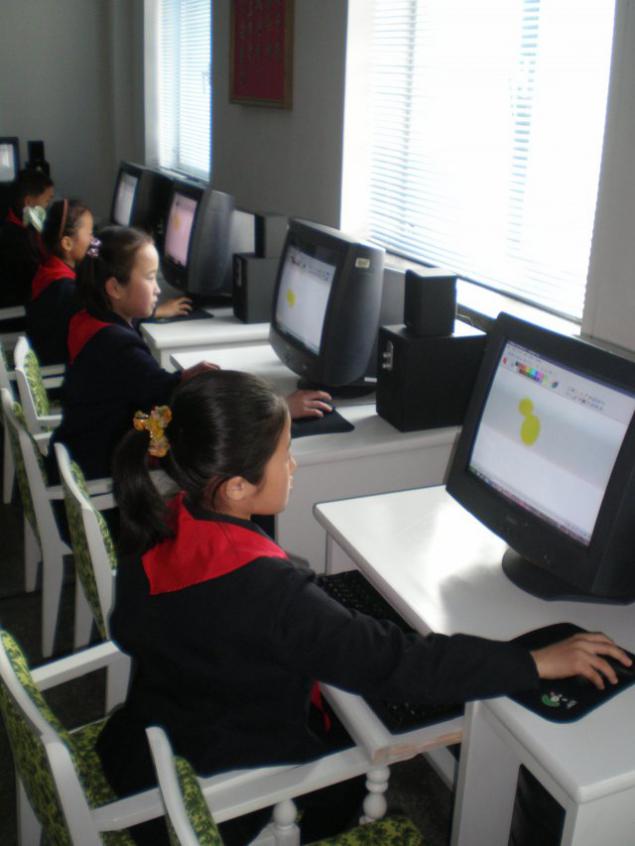
In general, I have not seen any problems with textbooks, with technology. Every school has a computer classroom, basically it doesn't matter, last year I was in rural schools, in city schools, we could pick any school from the list, we could point the finger at the school number, and we could be taken there. In fact, all schools are computerized.
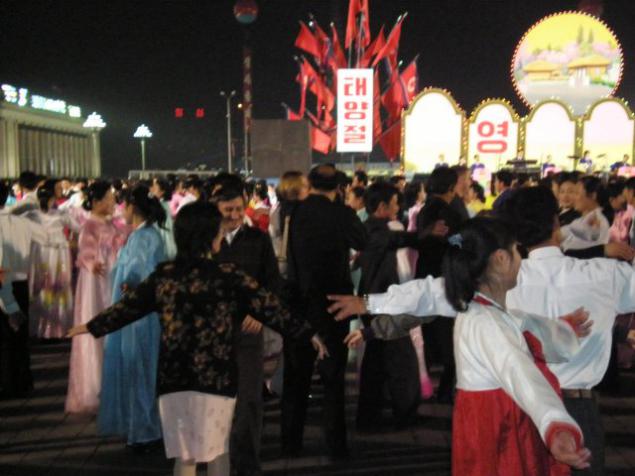
It is a spring festival, the birthday of comrade Kim Il-sung, dancing. Imagine the whole city going out into the square and dancing. Then the signal goes, everyone lines up, and goes in an unknown direction. Everything is very clear, everything is very worked out. In this picture, I even participate in this dance.
Yuri Romanenko. And the same well-established dance moves. (laughter in the room)
Vitaly Kulik. By the way, they dance very beautiful and beautiful music. In schools, there is not the Internet, but the Intranet, it is an internal network that unites different universities and computer institutions, but this internal network is mainly designed for universities.
There are exchanges of dissertations, abstracts, coursework between students of different universities. There are even akas within this Intrant, but there is no Internet access. It is available only in the leadership of the party, as well as in the Foreign Ministry and you can send an e-mail from the hotel, but you do not go to your free box, you send from the hotel drawer. It costs two euros, you can send and receive, but to the same address from which you send.
Yuri Romanenko. Two euros for one letter?
Vitaly Kulik. Yeah, two euros for one letter. There is no access to the network in the hotel either.

This is one of the computer classes where Internet conferences between universities take place, and this is the Polytechnic Institute of Kim Chak - the right hand of Kim Il-sung, the scanner on which you put the slide, it shows on the screen, immediately the university receives this image, say, in Nampo, there is an exchange of discussion and so on.
We went to one of these meetings by accident, we were quickly sent. This is an Arian rehearsal. There are acrobatic events that are held for anniversaries, round dates in the history of Korea, in the history of the party, the birthday of Kim Il-sung and other holidays, when people put letters, whole sentences, pictures and so on with their bodies. Everything looks very beautiful.

This is what regular schoolgirls look like.
There is a difference in clothing, there is a difference in income between the rural or urban population and other cities in Korea and Pyongyang. You can see that the level of prosperity in Pyongyang is higher. But in principle, we can say that there is a certain middle bar, which determines the overall level of prosperity of Koreans.
Vladimir Lupation. Any stores?
Vitaly Kulik. There are shops, there are markets. Food can be bought in the markets.

Here is one of the specifics of urban development - the facades are built up with large multi-storey houses, and behind them on the mountains such huts are hidden. There is very clean, good, everything is laid and so on, but here is the facade one, and behind the facade there are still such huts.
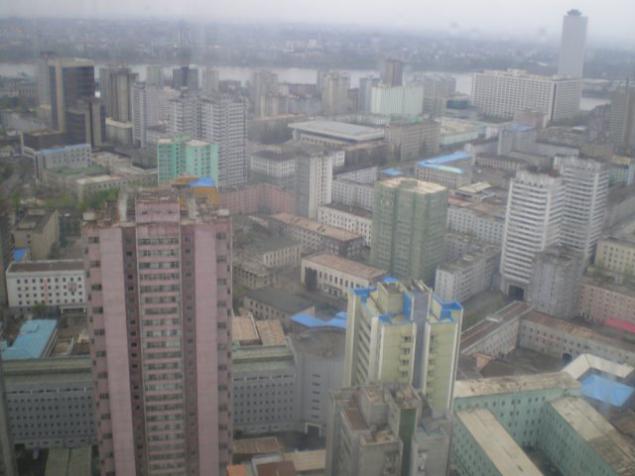
This is a view of Pyongyang from the top of the Goryeo Hotel, and you can see that most of the houses are high-rise. Koreans are not used to living in high-rise buildings, so, as we were told, they still live in huts. While it’s really impossible to build up Pyongyang, it’s so mountainous.
193598

In Pyongyang, there are no traffic lights, there are these girls who show how to drive properly. And they are very beautiful, this is a special selection in politics.
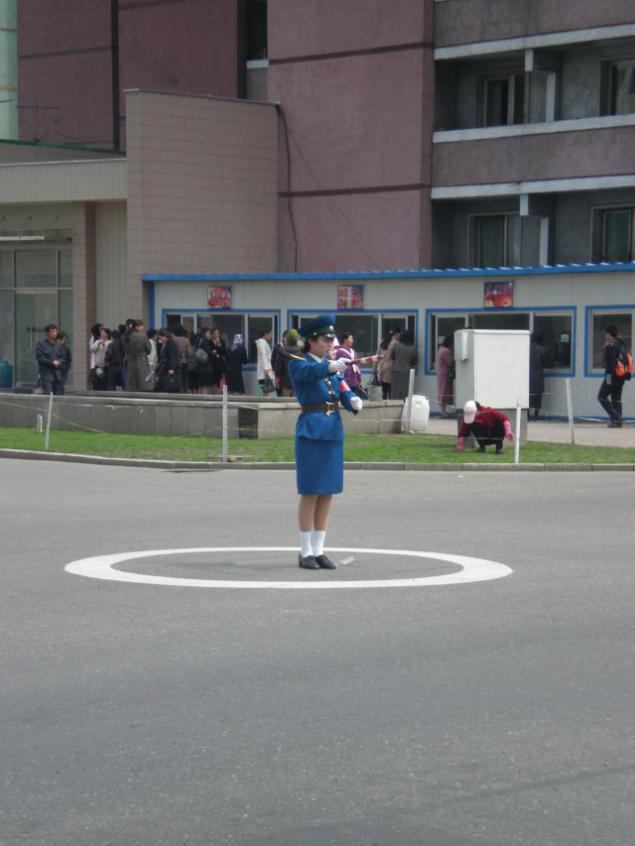
Vladimir Stus. Don't they have private cars?
Vitaly Kulik. There are even private cars. Private cars are especially common among cheungryong (Koreans, North Koreans living in Japan), such as the car we were driven in.
8131010102
This is an old Mercedes for foreign guests. Cars are privately owned, cars are mostly public, but there are also private. Private cars are Koreans who live permanently in Japan. Two hundred thousand Koreans live in Japan and have a residence permit. The Japanese call them an organized ethnic criminal group because they engage in “smuggling and illegal business.” Cheungryong is mainly a pro-Pyongyang community, so they have troubled relations with official Tokyo.
But the fact of the matter is that cheung-ryong is a form of profit for North Korea itself, as significant funds sometimes feed Korea. These are very rich people, one of the Cheungrenovites, for example, built an entire street in Pyongyang. The average income of a Chyeongren in Japan is about ten thousand euros per month. Business is very developed, and a significant part of these funds is deposited in North Korea, which is why it is a source of replenishment of the budget. So they're allowed to own private cars, and there's even a whole neighborhood called Hitachi where Cheungryong lives. For me, it was a discovery, unfortunately, there is no such photo here, when you walk around Pyongyang, get to a sports field where you play baseball, with full gear, with bats, respectively, real baseball in Pyongyang. It's kind of a very common game there.
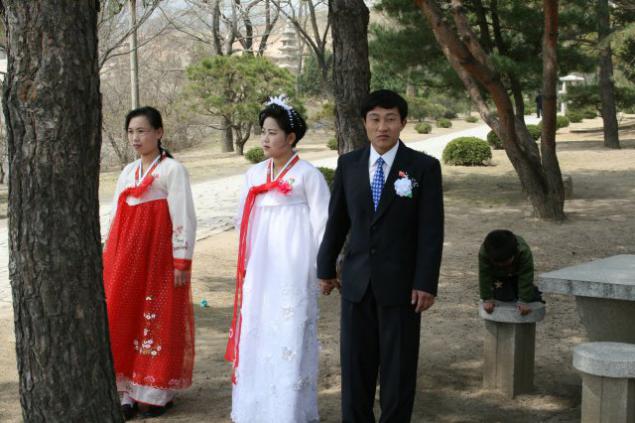
It's a Korean wedding.
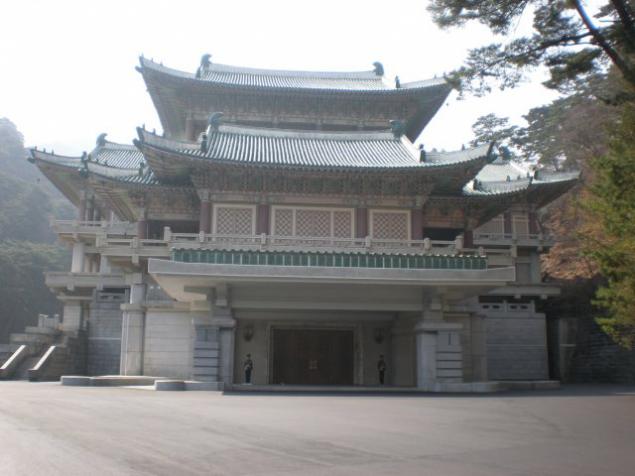
This is a small Buddhist monastery, stupas, several stupas on Mount Arengak.
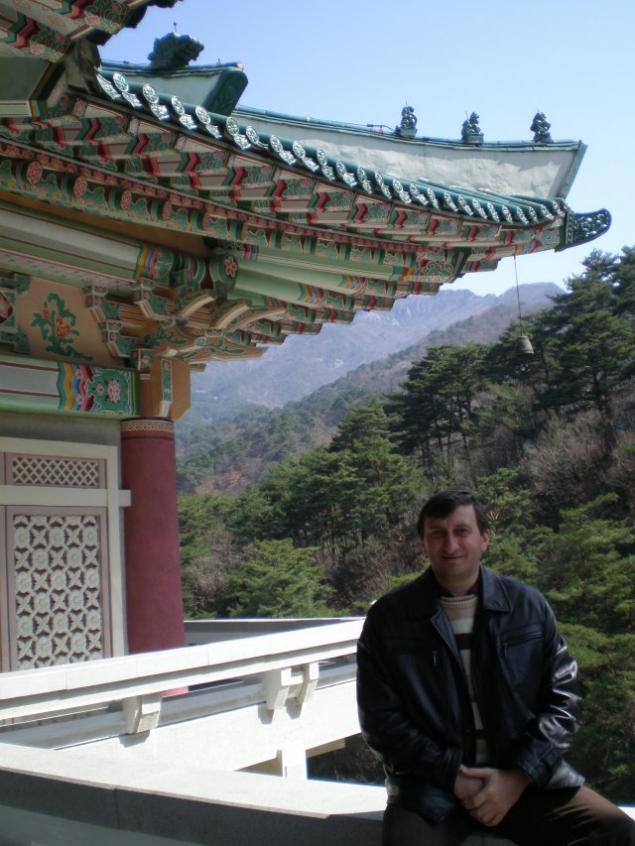
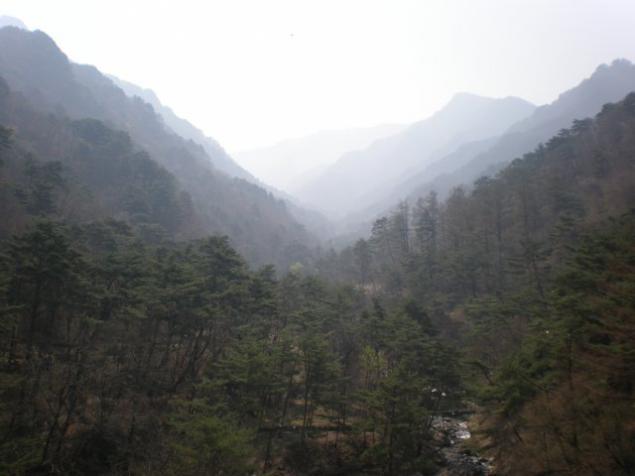
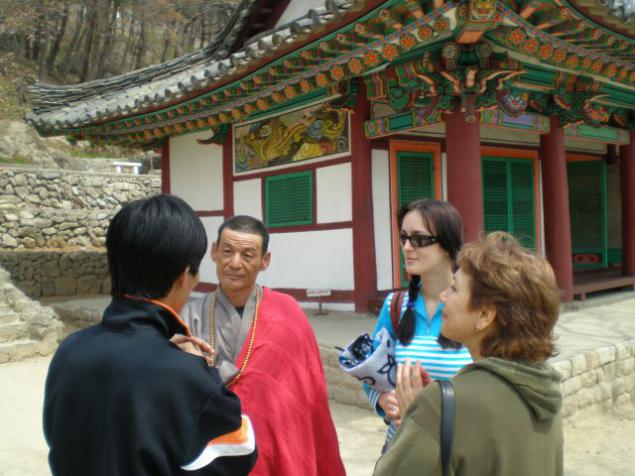
Now about the attitude towards religion. Religion is nationalized, there is an Orthodox Committee of Korea, there are Buddhist committees, and there are cheung-gode. Cheung-gode is a synthetic religion of Koreans, invented in the nineteenth century as a protest against the domination of Lutherans and Protestants. Buddhists, here we are talking to one of the monks, there are about twenty-two thousand, that is, parishioners and about two thousand monks throughout North Korea.
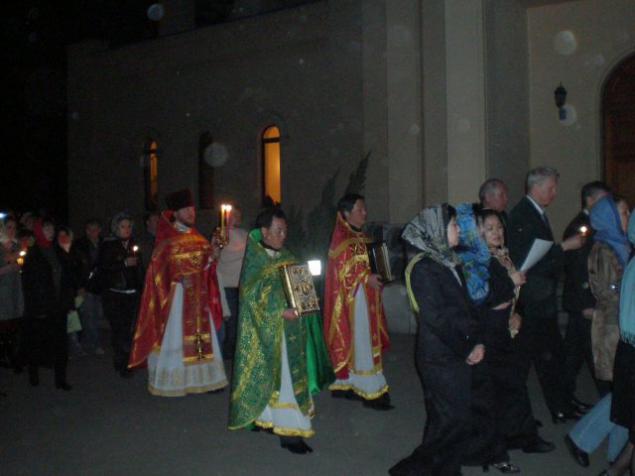
There is also the only Orthodox Church in which two Korean priests, that is, ethnic Koreans, rule. They were sent to the party in order. There is a representative next to the priest, a parishioner of the Orthodox Church, mostly Russians living in North Korea.
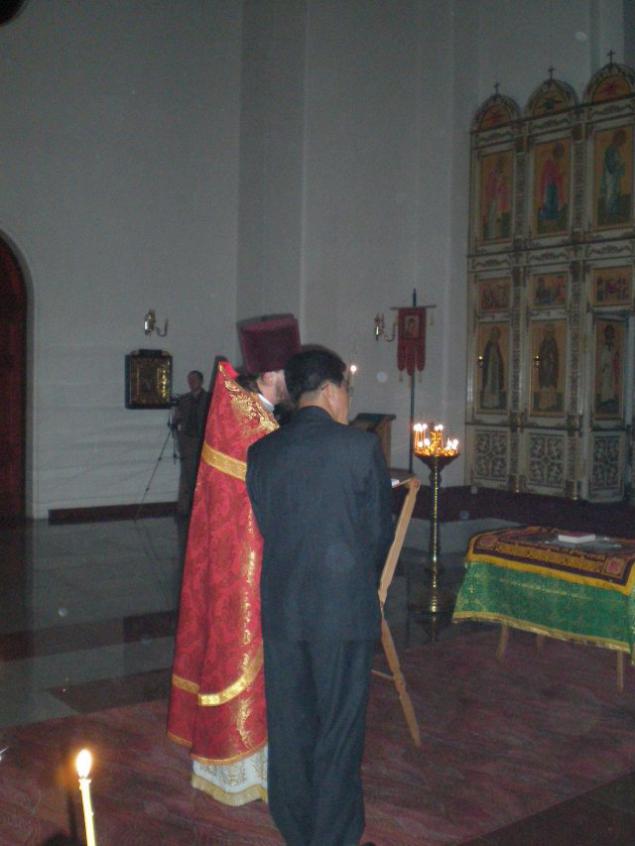
This is a picture of two Korean priests. Sometimes you can see a priest in a cassock with a badge with the image of Kim Il Sung. By order of the party, they were sent to study at a seminary near Moscow, and accordingly conduct a religious cult in North Korea for the needs of Russians and a small group of North Koreans who converted to Orthodoxy. As the local priest told me, there are only twelve of them. Most of the Orthodox are Russians.
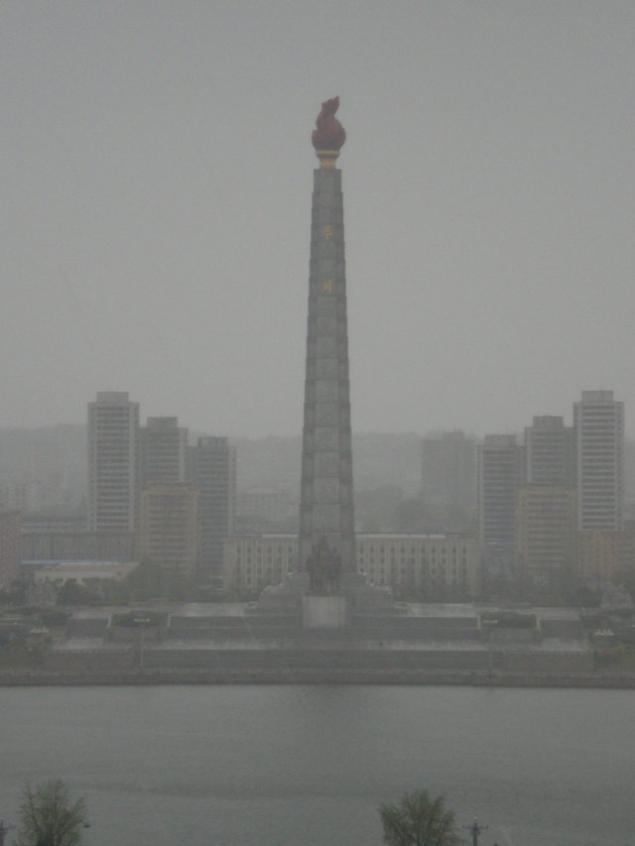
It is a monument to the idea of Juche, one of the largest monuments in Asia.
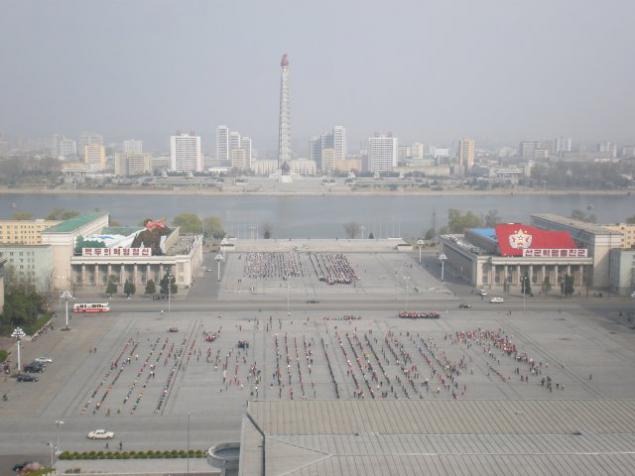 81
81
This is the square where all military parades take place.
This is a view from the Palace of Education. One of the buildings has two portraits of Marx and Lenin.
But if you look closely at Marx’s portrait, you will see that his eyes are slanted. Thus, the leadership of the party had to attach to the ideas of Marx.
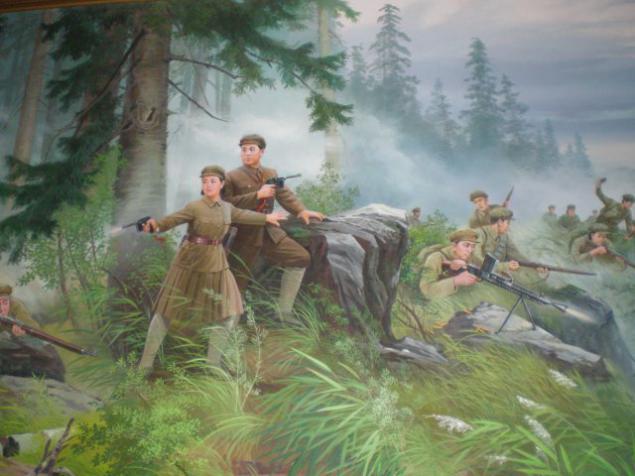
These are famous paintings depicting the wife of Kim Bong-suk defending comrade Kim Il-sung from the Japanese invaders. There was a real episode when she protected Kim Il Sung from some sniper.
529598
This is a poster during the war of liberation against the American invaders. If you look closely at these posters, they are very reminiscent of our military posters of the forties. And there even the motherland calls, unfortunately, not such a photo where a Korean woman in the pose of a poster known to us.
Many posters were borrowed because propagandists and Koreans were trained in Soviet military schools, and military instructors were one of the main representatives of foreigners in Korea until the fiftieth year. Soviet and Chinese. But in 1956-1959 there was a turning point when the faction of worshippers, which was oriented towards the Soviet Union, was eliminated, and most of the officers and part of the party elite, oriented towards the Soviet Union, were either destroyed or left, because the party nomenklatura of the early fifties consisted of three groups. One group consisted of Soviet Koreans returning to Korea to prepare the Koreans for independence. The second group was pro-Chinese people living in China. The third group represented the South Korean Communist Party, the strongest Communist Party in Korea at the time. And Kim Il Sung himself brought with him a partisan, that is, the backbone of his elite, which later came to power, it was the partisans who fought with him in Manchuria.
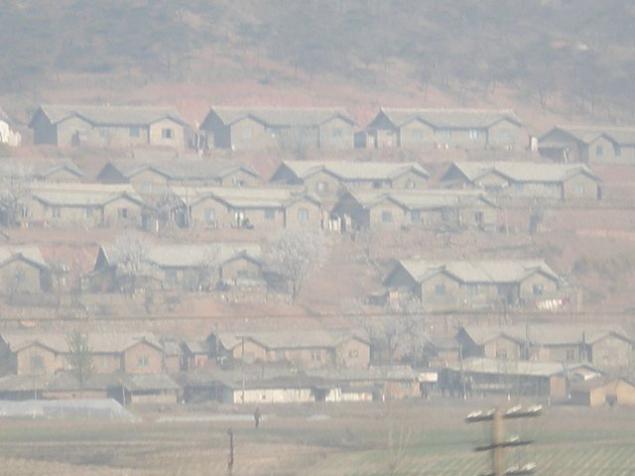
This is the countryside, these houses that are mixed with huts. Classic villages that were in Korea in the nineteenth — early twentieth century, no longer exist, there are such houses, such villages.
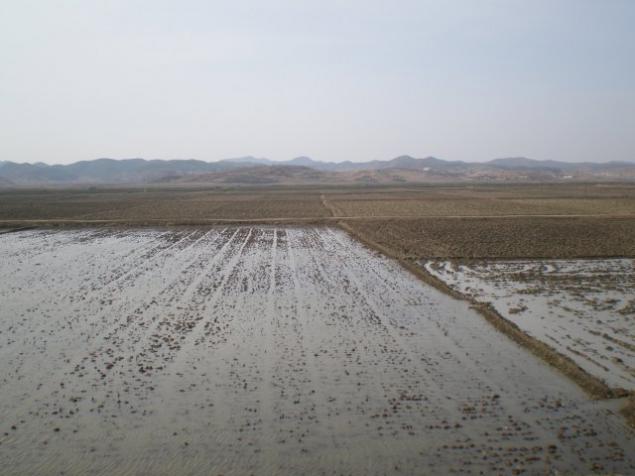
These are rice fields, cultivated mainly with the help of cows and horses. There are very few machines, we have hardly seen tractors. But North Korea, unlike South Korea, is mountainous and has to work by hand.
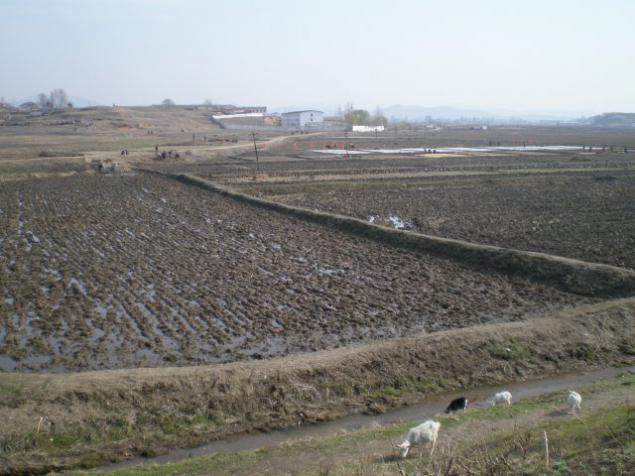
The whole territory of Korea, even near the roads, small areas of land, they are all cultivated, and there is not a single plot where anything does not grow.

This is a recreation park on Ryongak, a very convenient place, very popular for picnics and kebabs.
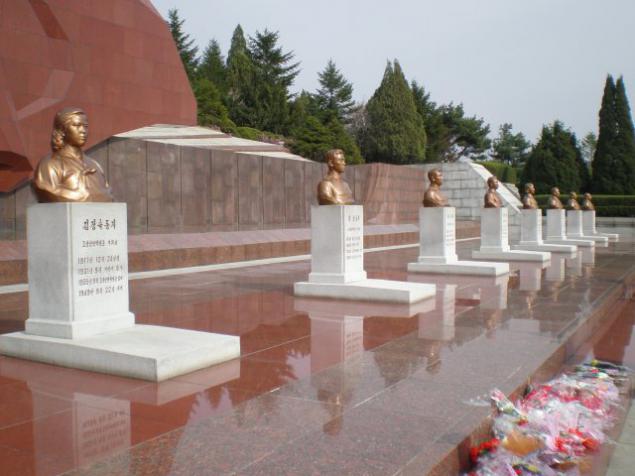
This is the cemetery of revolutionaries. I am the one who lays flowers at the grave of comrade Kim Jong-il’s mother – it is a mandatory ritual for all guests, for all tourists who come to Korea.
Here is the museum of the revolution, the pedestal to comrade Kim Il-sung. The Museum of the Revolution contains all the elements, all the things that Comrade Kim Il-sung and Comrade Kim Jong-il ever held in their hands, from the pistols given by his father to Comrade Kim Il-sung to the pen and pencil that Comrade Kim Jong-il used to write in school.

This is a square and a monument to comrade Kim Il Sung, a very beautiful place, very beautifully made and monumental.
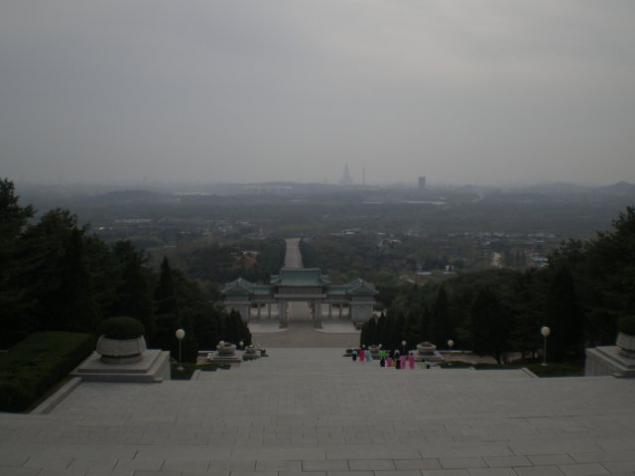
This is a museum of gifts to comrade Kim Il Sung, it contains about fifty thousand gifts presented to comrade Kim Il Sung during his life and after his life. Presents are still being given to comrade Kim Il Sung.
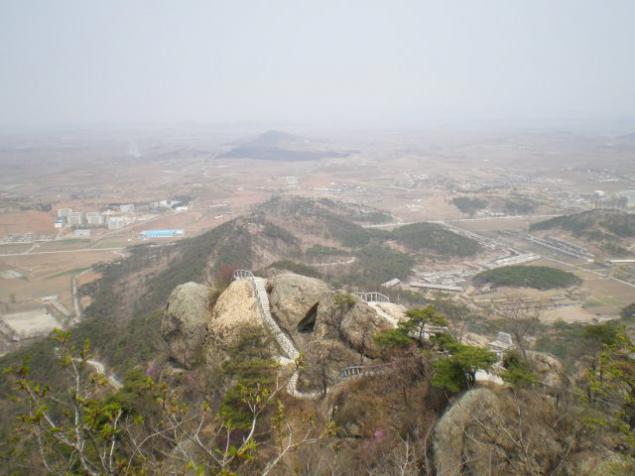
This is a view from above in the Mehyan Mountains, a very beautiful fabulous area, so fantastic, I would say.
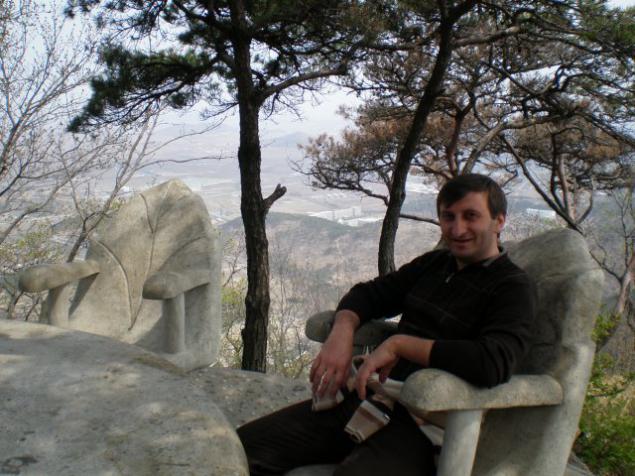
Mehyang is home mainly to UN representatives who are involved in the UN program for the supply of food for North Korea, and foreign tourists. There are a lot of foreign tourists, by the way. These are mainly Europeans and Chinese. The Chinese come there to see who they might be if the Hongweibin won.
By the way, I forgot to tell you about the gift museum of Kim Jong-il already, two museums: comrade Kim Il-sung and comrade Kim Jong-il. It also contains about a hundred thousand gifts, because they still give. For example, we also gave very good things to Comrade Kim Jong-il, they are all posted there, you can see from the first Panasonics and Hitachi equipment, to modern equipment, mobile phones and so on. Mobile phones are banned in North Korea for foreigners, but are allowed for the leadership of the Workers’ Party of Korea and the military.
This monumental structure is a gateway that divides the South Korean Sea, it is also called the South China Sea, a gateway that separates the Tedongan River, the main river of North Korea, and the sea that allows ships to pass.
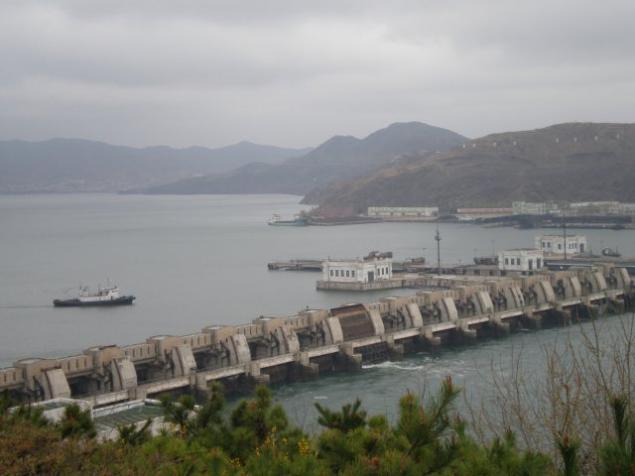
The gateway was built in the eighties for eighty billion dollars. Floods are now rare in North Korea, mainly due to the heavy rains that often occur in the area.

These are the clothes of a young Korean. The history of these clothes is very interesting. At one time, comrade Kim Il-sung sewed a general's uniform for his little comrade Kim Jong-il. After that, many Koreans sew general uniforms with generalissimo epaulets and insignia for their children. It is such a tradition.
In general, the Koreans are very sensitive to history, but mostly all objects are historical, because in the fifties, the Americans destroyed everything that was on the territory of North Korea. There are only small buildings left. In Pyongyang, only two buildings remained intact, all other buildings were destroyed. Of the forty thousand Koreans living in Pyongyang, forty-three thousand bombs were dropped on them in 1952, that is, slightly more than one bomb for every Korean living in Pyongyang. The city didn't exist.
This is a monkey that under the influence of the idea of Juche performs various tricks in the zoo of Pyongyang.
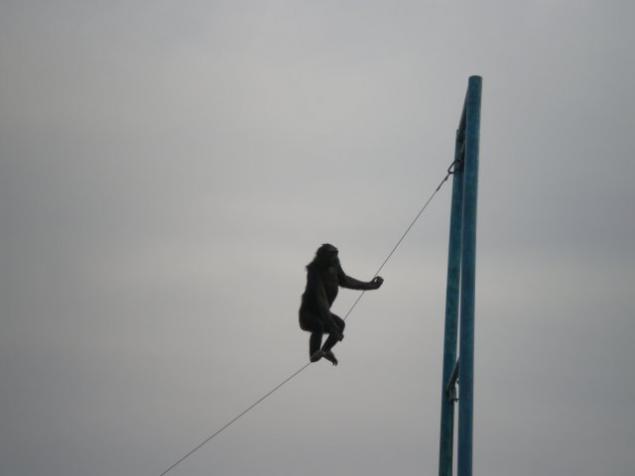
Yuri Gavrilechko. How are her ideas broadcast?
Vitaly Kulik. There are only slogans, and she shows different tricks. All this against the background of music and slogans or quotes from great leaders. No training, as explained to us by the zoo employee, only influenced by the idea.
One of the ideological trends in North Korea is the idea of reunification of the motherland, there is a program written by comrade Kim Il-sung of twelve points on the reunification of the motherland. He proposed the creation of a confederate state, which would include North Korea and South Korea as one country - two systems. That is, according to the principle proposed by Taiwan by the Chinese Communist Party. However, this idea was abandoned, and now the Koreans insist that it be implemented, namely the North Koreans. But there is a powerful Juche movement in South Korea, especially among the student youth, most of the farm and labor unions are under the influence of Pyongyang, and I would even say so that the number of defectors in the eighties four thousand went to South Korea, and four thousand moved from South to North.
Now the situation has changed, now there is labor migration from North Korea to China, but very few people go from North Korea to South Korea because socializing South Korea is practically impossible. There are two countries.
This is the table at which the armistice agreement was signed.

That's where they're standing, the path begins, that gravel is sprinkled, and South Korea is there. Not a single South Korean soldier, not a single South Korean border guard. There are days of separation. We were brought one day to see, the next day there were no North Korean tourists, there were South Korean tourists, and there were no North Korean border guards.
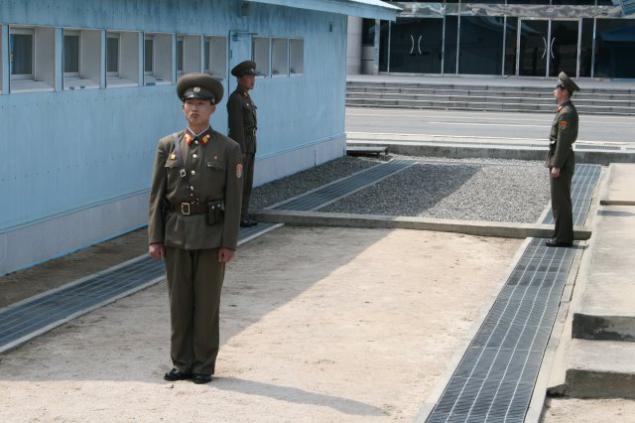
This is the tomb of Tangun, the founder of the Korean nation, a saint who is revered in Korea and North. But the history of this burial is very interesting, because comrade Kim Il Sung was walking through the area and said that there should be a tomb of Tangun, archaeologists began to dig, and really found the tomb of Tangun, with the coffin, sarcophagus and all the rest.
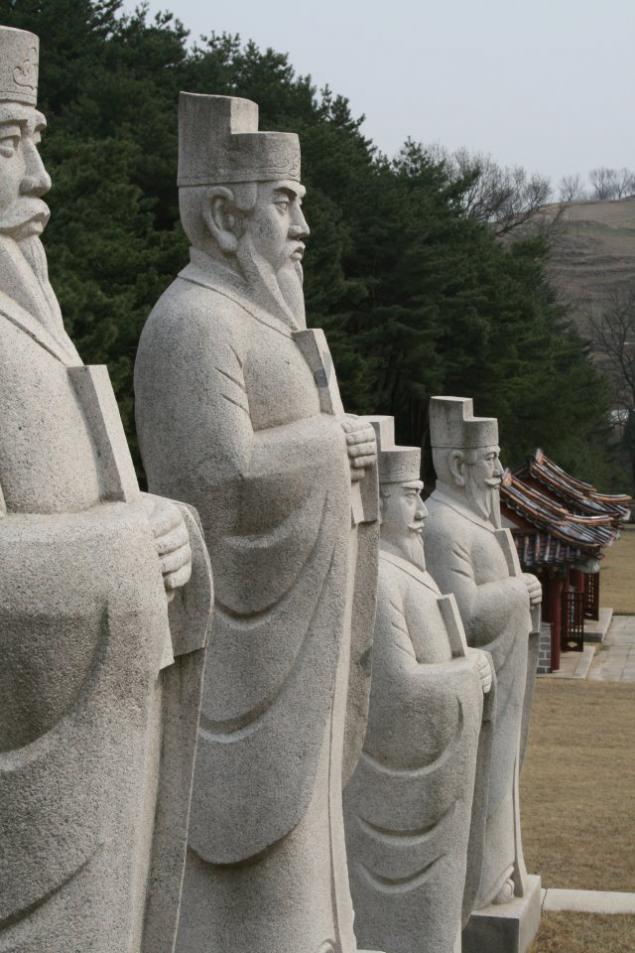
Vladimir Lupation. Does South Korea have its own Tangun?
Vitaly Kulik. No, the grave is, indeed, according to historical chronicles, it is located on the territory of North Korea, but it is maintained in the area of Pyongyang. But until recently, this is one of the settlements of North Korea, they are all typical, differ only in terms of settlement, because the slopes. The fact is that land is very expensive in terms of development, so they use the most narrowed settlements. And they're finely scattered and trying to build high-rise buildings, not single-storey houses.
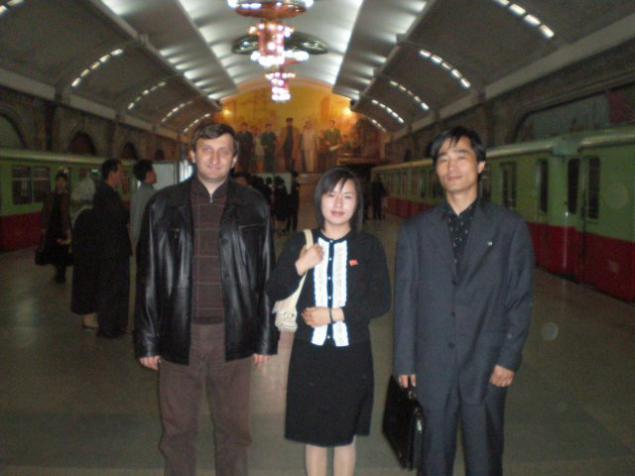
This is the entrance to the subway and the symbol of the subway. None of the inscriptions are in a foreign language, all in Korean. All the streets, names, subways are all written in Korean. This is a subway car, and there are two portraits of the two leaders in each subway car.
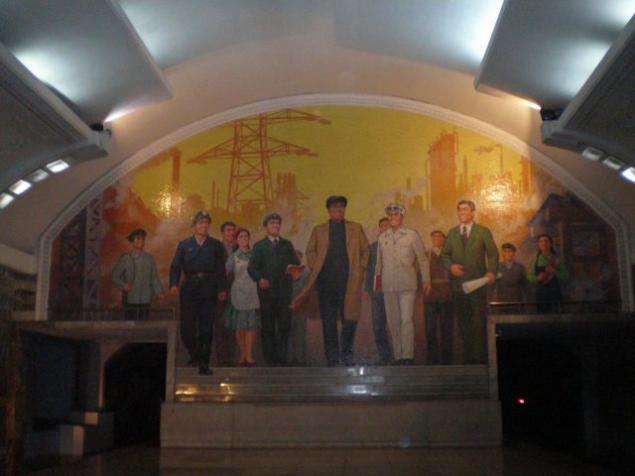
Ktati, the subway layout, the number of stations, the two lines, basically the metro station, we were taken to only two stations, but I know people who were at other stations, and they are no different from these.
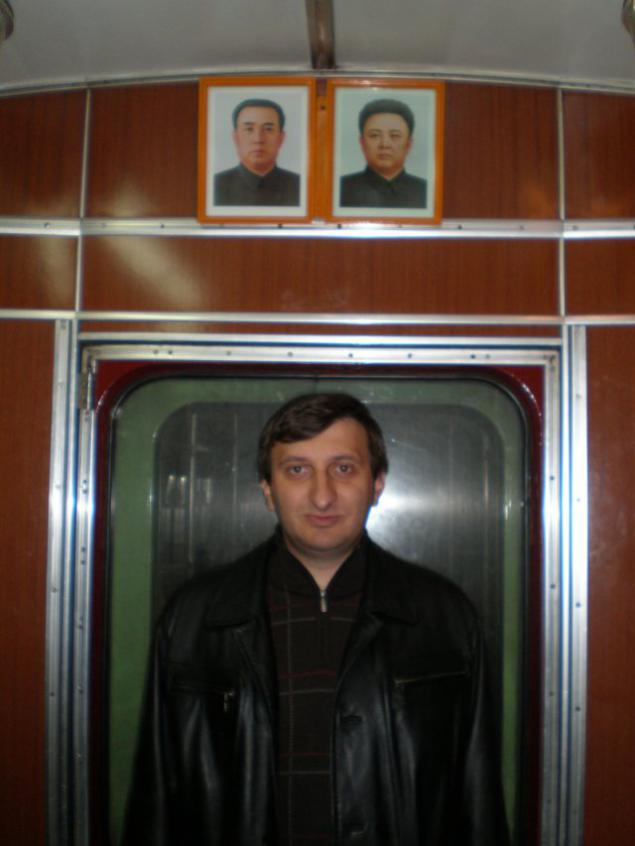
These are standard stations, monumental, similar to the Moscow or Kiev metro of the sixties-seventies. Mosaic is required.
It is everywhere, on all buildings, in all museums, mostly of ideological content. Unfortunately, unlike the early nineties, symbols, ideological posters and political souvenirs have now disappeared from sale.
This is one of the subway halls, very beautiful, monumental. Now the stake is on the popularization of Korea is not ideological, in my opinion, the Koreans only lose from this.
This is one of the mandatory school visits with the performance of the local school ensemble. Each group is taken to watch these performances, this is a mandatory event, schoolchildren are happy to perform in front of guests, show different numbers and performances. Basically, these are political songs, a song about the commander Kim Il Sung, mandatory for performance. It was also translated into Russian and is required from tourists to teach it as a souvenir to perform it together with Korean comrades during a picnic. All.
Now back to the report itself. There are two definitions, two names for Korea. Korea is a name for foreigners. The North Koreans call themselves Joseon. This is the name of the first Korean state to emerge from North Korea. The South Koreans call themselves Hanguk. Therefore, the Republic of Hanguk is written in Korean. That is, according to the name of Koreans who lived in Korea on the territory of South Korea. Korea or Goryeo is the name of the state, not the people. So when you ask, or this product is Korean-made: is it choseon? They tell you, yes, it's Chosun or no, it's Han, and Han is Chinese. By the way, when we talk about choseon, it has an exact translation, translated as “the country of morning freshness”. Since the name of the first state of Joseon, when it developed so, the Chinese gave writing, although the Koreans claim that there was always hieroglyphic writing in Korea, but many Chinese characters are used in Korean hieroglyphic writing. Now the writing system in Korea is literal. So what you see in Korean inscriptions are letters, they're not characters. They have forty-two letters. But preserved and hieroglyphic writing, which was popular in the nineteenth — early twentieth century. Joseon means cho is morning and sleep is freshness, hence the origin of choseon.
You can, by the way, translate Moscow into Korean or Chinese using hieroglyphs. It stands for “calm cutting of grains”. If you take the hieroglyph, which means the word of Moscow, you get a quiet cutting of grains. Therefore, Koreans use many of the names themselves as puzzles. Hence, newspeak appeared and developed in North Korea, which has nothing to do with traditional Korean literature or Korean. Lots of newswords.
In principle, the history of Korea is very symbolic and very interesting. There have been two stages of Korea's development that seem to manifest themselves in the greatest opening, the heyday of Korea. This is the first state, Goryeo and Goguryeo. Goguryeo emerged after Joseon, when Wang Gong created this state as a ruler, as a union of all Korean territories under his leadership. For the first time in the state of Goryeo united all of Korea: South and North. This state did not last long, only five centuries. After that, there was feudal fragmentation, in Korea there was a slaveholding system under Koryu. After that, in the fifth and seventh centuries, the state of Goguryu arose, which also gathered the whole of Korea into a single state with the capital of Goguryu, Pyongyang. Hence Pyongyang’s political ambitions that a united Korea should be united under Pyongyang’s leadership and that the capital should be in Pyongyang.
If you specify the system that is now in North Korea, we must say about what North Korea was from the sixties to the nineties. First, there was a card system. Second, there was clear ideological and political control over the population, complete information isolation, all factions that existed in the Workers’ Party of Korea were liquidated or localized, but at the same time, the multiparty system remained in North Korea. There are three parties in Korea: The Workers' Party of Korea, the Party of Young Friends of Cheungdoge, is a religious party, and the Social Democratic Party. Until the eighties, it was called the Democratic Party.
Source: hvylya.org

Vitaly Kulik. Good afternoon, we begin our expert meeting. The fact is that recently I was lucky, I was in North Korea and the Russian Far East. Hence the name of such a meeting is “Will Russia Hold the Far East?” What we have seen is evidence of important new trends in the development of Russian regions, which will affect global security and regional security. Starting with North Korea, I will give you a short presentation of our vision of what is happening in North Korea and the prospects for resolving the conflict and the situation in the future.
There is a certain set of myths about North Korea, which are produced by the international media, that it is a closed country, that there is Stalinism, that there is complete control of the authorities over the life of society, that there are no forms of self-expression and self-realization.
Let's start with the pictures, and I'll explain what and how.
In the image above, an interesting point, because it symbolizes the unity of the three classes of Korea: the worker, the peasant, and in the middle is a brush - a symbol of the intelligentsia.
North Korea in general. The thing is, what North Korea is like now is a bit like the spirit and style of the Soviet Union. Even, rather, the time of the forties and fifties with a certain modification.
This thirty-eighth parallel is the building that separates North Korea from South Korea. These barracks are the venues for conferences and meetings between South and North Korea, the thirty-eighth parallel.

Well, let's probably take a look at the pictures first, and then I'll tell you what's going on.

This is a pioneer detachment, that is, there are pioneers, Komsomol members, and now there is the Kim Il Sung Youth Union, and a pioneer organization. As in our old days, the only difference is that people who have passed the school of Pioneer and Komsomol organizations move up the career ladder faster, they are appointed to positions faster, and functionaries are one of the driving elements of North Korean society.

It is an arch dedicated to the revolutionary struggle that began in 1925, first the revolutionary activities of Comrade Kim Il-sung, and until 1945, the year of the liberation of Korea.

This is the subway entrance. The subway is developed, of course, not Kiev scale, but the cheapest in the world is five won. If we take into account the market rate of won and 2600 won for one dollar, then I do not even dare to say what it is a hundredth or a thousandth cent. Free, actually.

These are transportation lines. There are no shuttles there, trolleybuses are made by hand, since there is no press, so they are a little so dented. When I asked why trolleybuses have such roofs, they explained to me that, you know, there is no press in Korea, so everything is done manually, since the basis of the Juche ideology is self-reliance.

This is an exhibition of flowers, there are two kinds of flowers. These are the flowers of Kimirsenhwa and Kimchenirhwa, the small flowers are Kimirsenhwa, and the large flowers are Kimchenirhwa. The history of flowers is very interesting because the flowers were brought by two Juche supporters in Indonesia and Japan. Kimirsenhwa was brought by a revolutionary who lived in Indonesia during Suharto’s time, he bred this flower and gave it to comrade Kim Il Sung. But after Suharto came to power, the flower disappeared and only recently was found again and returned to North Korea. And now it is the symbol of Juche and the symbol of comrade Kim Il-sung. Kimchenirhwa brought the Jucheist out of Japan, a Japanese who gave the flower to comrade Kim Jong-il.

This is a young Korean boy in national clothes, there is a date - 2012. The year 2012 is the date when North Korea should become a powerful socialist state with nuclear weapons and a space fleet. We are holding Euro 2012, and they are building a powerful Korean state there.

In general, I have not seen any problems with textbooks, with technology. Every school has a computer classroom, basically it doesn't matter, last year I was in rural schools, in city schools, we could pick any school from the list, we could point the finger at the school number, and we could be taken there. In fact, all schools are computerized.

It is a spring festival, the birthday of comrade Kim Il-sung, dancing. Imagine the whole city going out into the square and dancing. Then the signal goes, everyone lines up, and goes in an unknown direction. Everything is very clear, everything is very worked out. In this picture, I even participate in this dance.
Yuri Romanenko. And the same well-established dance moves. (laughter in the room)
Vitaly Kulik. By the way, they dance very beautiful and beautiful music. In schools, there is not the Internet, but the Intranet, it is an internal network that unites different universities and computer institutions, but this internal network is mainly designed for universities.
There are exchanges of dissertations, abstracts, coursework between students of different universities. There are even akas within this Intrant, but there is no Internet access. It is available only in the leadership of the party, as well as in the Foreign Ministry and you can send an e-mail from the hotel, but you do not go to your free box, you send from the hotel drawer. It costs two euros, you can send and receive, but to the same address from which you send.
Yuri Romanenko. Two euros for one letter?
Vitaly Kulik. Yeah, two euros for one letter. There is no access to the network in the hotel either.

This is one of the computer classes where Internet conferences between universities take place, and this is the Polytechnic Institute of Kim Chak - the right hand of Kim Il-sung, the scanner on which you put the slide, it shows on the screen, immediately the university receives this image, say, in Nampo, there is an exchange of discussion and so on.
We went to one of these meetings by accident, we were quickly sent. This is an Arian rehearsal. There are acrobatic events that are held for anniversaries, round dates in the history of Korea, in the history of the party, the birthday of Kim Il-sung and other holidays, when people put letters, whole sentences, pictures and so on with their bodies. Everything looks very beautiful.

This is what regular schoolgirls look like.
There is a difference in clothing, there is a difference in income between the rural or urban population and other cities in Korea and Pyongyang. You can see that the level of prosperity in Pyongyang is higher. But in principle, we can say that there is a certain middle bar, which determines the overall level of prosperity of Koreans.
Vladimir Lupation. Any stores?
Vitaly Kulik. There are shops, there are markets. Food can be bought in the markets.

Here is one of the specifics of urban development - the facades are built up with large multi-storey houses, and behind them on the mountains such huts are hidden. There is very clean, good, everything is laid and so on, but here is the facade one, and behind the facade there are still such huts.

This is a view of Pyongyang from the top of the Goryeo Hotel, and you can see that most of the houses are high-rise. Koreans are not used to living in high-rise buildings, so, as we were told, they still live in huts. While it’s really impossible to build up Pyongyang, it’s so mountainous.
193598

In Pyongyang, there are no traffic lights, there are these girls who show how to drive properly. And they are very beautiful, this is a special selection in politics.

Vladimir Stus. Don't they have private cars?
Vitaly Kulik. There are even private cars. Private cars are especially common among cheungryong (Koreans, North Koreans living in Japan), such as the car we were driven in.
8131010102
This is an old Mercedes for foreign guests. Cars are privately owned, cars are mostly public, but there are also private. Private cars are Koreans who live permanently in Japan. Two hundred thousand Koreans live in Japan and have a residence permit. The Japanese call them an organized ethnic criminal group because they engage in “smuggling and illegal business.” Cheungryong is mainly a pro-Pyongyang community, so they have troubled relations with official Tokyo.
But the fact of the matter is that cheung-ryong is a form of profit for North Korea itself, as significant funds sometimes feed Korea. These are very rich people, one of the Cheungrenovites, for example, built an entire street in Pyongyang. The average income of a Chyeongren in Japan is about ten thousand euros per month. Business is very developed, and a significant part of these funds is deposited in North Korea, which is why it is a source of replenishment of the budget. So they're allowed to own private cars, and there's even a whole neighborhood called Hitachi where Cheungryong lives. For me, it was a discovery, unfortunately, there is no such photo here, when you walk around Pyongyang, get to a sports field where you play baseball, with full gear, with bats, respectively, real baseball in Pyongyang. It's kind of a very common game there.

It's a Korean wedding.

This is a small Buddhist monastery, stupas, several stupas on Mount Arengak.



Now about the attitude towards religion. Religion is nationalized, there is an Orthodox Committee of Korea, there are Buddhist committees, and there are cheung-gode. Cheung-gode is a synthetic religion of Koreans, invented in the nineteenth century as a protest against the domination of Lutherans and Protestants. Buddhists, here we are talking to one of the monks, there are about twenty-two thousand, that is, parishioners and about two thousand monks throughout North Korea.

There is also the only Orthodox Church in which two Korean priests, that is, ethnic Koreans, rule. They were sent to the party in order. There is a representative next to the priest, a parishioner of the Orthodox Church, mostly Russians living in North Korea.

This is a picture of two Korean priests. Sometimes you can see a priest in a cassock with a badge with the image of Kim Il Sung. By order of the party, they were sent to study at a seminary near Moscow, and accordingly conduct a religious cult in North Korea for the needs of Russians and a small group of North Koreans who converted to Orthodoxy. As the local priest told me, there are only twelve of them. Most of the Orthodox are Russians.

It is a monument to the idea of Juche, one of the largest monuments in Asia.
 81
81This is the square where all military parades take place.
This is a view from the Palace of Education. One of the buildings has two portraits of Marx and Lenin.
But if you look closely at Marx’s portrait, you will see that his eyes are slanted. Thus, the leadership of the party had to attach to the ideas of Marx.

These are famous paintings depicting the wife of Kim Bong-suk defending comrade Kim Il-sung from the Japanese invaders. There was a real episode when she protected Kim Il Sung from some sniper.
529598
This is a poster during the war of liberation against the American invaders. If you look closely at these posters, they are very reminiscent of our military posters of the forties. And there even the motherland calls, unfortunately, not such a photo where a Korean woman in the pose of a poster known to us.
Many posters were borrowed because propagandists and Koreans were trained in Soviet military schools, and military instructors were one of the main representatives of foreigners in Korea until the fiftieth year. Soviet and Chinese. But in 1956-1959 there was a turning point when the faction of worshippers, which was oriented towards the Soviet Union, was eliminated, and most of the officers and part of the party elite, oriented towards the Soviet Union, were either destroyed or left, because the party nomenklatura of the early fifties consisted of three groups. One group consisted of Soviet Koreans returning to Korea to prepare the Koreans for independence. The second group was pro-Chinese people living in China. The third group represented the South Korean Communist Party, the strongest Communist Party in Korea at the time. And Kim Il Sung himself brought with him a partisan, that is, the backbone of his elite, which later came to power, it was the partisans who fought with him in Manchuria.

This is the countryside, these houses that are mixed with huts. Classic villages that were in Korea in the nineteenth — early twentieth century, no longer exist, there are such houses, such villages.

These are rice fields, cultivated mainly with the help of cows and horses. There are very few machines, we have hardly seen tractors. But North Korea, unlike South Korea, is mountainous and has to work by hand.

The whole territory of Korea, even near the roads, small areas of land, they are all cultivated, and there is not a single plot where anything does not grow.

This is a recreation park on Ryongak, a very convenient place, very popular for picnics and kebabs.

This is the cemetery of revolutionaries. I am the one who lays flowers at the grave of comrade Kim Jong-il’s mother – it is a mandatory ritual for all guests, for all tourists who come to Korea.
Here is the museum of the revolution, the pedestal to comrade Kim Il-sung. The Museum of the Revolution contains all the elements, all the things that Comrade Kim Il-sung and Comrade Kim Jong-il ever held in their hands, from the pistols given by his father to Comrade Kim Il-sung to the pen and pencil that Comrade Kim Jong-il used to write in school.

This is a square and a monument to comrade Kim Il Sung, a very beautiful place, very beautifully made and monumental.

This is a museum of gifts to comrade Kim Il Sung, it contains about fifty thousand gifts presented to comrade Kim Il Sung during his life and after his life. Presents are still being given to comrade Kim Il Sung.

This is a view from above in the Mehyan Mountains, a very beautiful fabulous area, so fantastic, I would say.

Mehyang is home mainly to UN representatives who are involved in the UN program for the supply of food for North Korea, and foreign tourists. There are a lot of foreign tourists, by the way. These are mainly Europeans and Chinese. The Chinese come there to see who they might be if the Hongweibin won.
By the way, I forgot to tell you about the gift museum of Kim Jong-il already, two museums: comrade Kim Il-sung and comrade Kim Jong-il. It also contains about a hundred thousand gifts, because they still give. For example, we also gave very good things to Comrade Kim Jong-il, they are all posted there, you can see from the first Panasonics and Hitachi equipment, to modern equipment, mobile phones and so on. Mobile phones are banned in North Korea for foreigners, but are allowed for the leadership of the Workers’ Party of Korea and the military.
This monumental structure is a gateway that divides the South Korean Sea, it is also called the South China Sea, a gateway that separates the Tedongan River, the main river of North Korea, and the sea that allows ships to pass.

The gateway was built in the eighties for eighty billion dollars. Floods are now rare in North Korea, mainly due to the heavy rains that often occur in the area.

These are the clothes of a young Korean. The history of these clothes is very interesting. At one time, comrade Kim Il-sung sewed a general's uniform for his little comrade Kim Jong-il. After that, many Koreans sew general uniforms with generalissimo epaulets and insignia for their children. It is such a tradition.
In general, the Koreans are very sensitive to history, but mostly all objects are historical, because in the fifties, the Americans destroyed everything that was on the territory of North Korea. There are only small buildings left. In Pyongyang, only two buildings remained intact, all other buildings were destroyed. Of the forty thousand Koreans living in Pyongyang, forty-three thousand bombs were dropped on them in 1952, that is, slightly more than one bomb for every Korean living in Pyongyang. The city didn't exist.
This is a monkey that under the influence of the idea of Juche performs various tricks in the zoo of Pyongyang.

Yuri Gavrilechko. How are her ideas broadcast?
Vitaly Kulik. There are only slogans, and she shows different tricks. All this against the background of music and slogans or quotes from great leaders. No training, as explained to us by the zoo employee, only influenced by the idea.
One of the ideological trends in North Korea is the idea of reunification of the motherland, there is a program written by comrade Kim Il-sung of twelve points on the reunification of the motherland. He proposed the creation of a confederate state, which would include North Korea and South Korea as one country - two systems. That is, according to the principle proposed by Taiwan by the Chinese Communist Party. However, this idea was abandoned, and now the Koreans insist that it be implemented, namely the North Koreans. But there is a powerful Juche movement in South Korea, especially among the student youth, most of the farm and labor unions are under the influence of Pyongyang, and I would even say so that the number of defectors in the eighties four thousand went to South Korea, and four thousand moved from South to North.
Now the situation has changed, now there is labor migration from North Korea to China, but very few people go from North Korea to South Korea because socializing South Korea is practically impossible. There are two countries.
This is the table at which the armistice agreement was signed.

That's where they're standing, the path begins, that gravel is sprinkled, and South Korea is there. Not a single South Korean soldier, not a single South Korean border guard. There are days of separation. We were brought one day to see, the next day there were no North Korean tourists, there were South Korean tourists, and there were no North Korean border guards.

This is the tomb of Tangun, the founder of the Korean nation, a saint who is revered in Korea and North. But the history of this burial is very interesting, because comrade Kim Il Sung was walking through the area and said that there should be a tomb of Tangun, archaeologists began to dig, and really found the tomb of Tangun, with the coffin, sarcophagus and all the rest.

Vladimir Lupation. Does South Korea have its own Tangun?
Vitaly Kulik. No, the grave is, indeed, according to historical chronicles, it is located on the territory of North Korea, but it is maintained in the area of Pyongyang. But until recently, this is one of the settlements of North Korea, they are all typical, differ only in terms of settlement, because the slopes. The fact is that land is very expensive in terms of development, so they use the most narrowed settlements. And they're finely scattered and trying to build high-rise buildings, not single-storey houses.

This is the entrance to the subway and the symbol of the subway. None of the inscriptions are in a foreign language, all in Korean. All the streets, names, subways are all written in Korean. This is a subway car, and there are two portraits of the two leaders in each subway car.

Ktati, the subway layout, the number of stations, the two lines, basically the metro station, we were taken to only two stations, but I know people who were at other stations, and they are no different from these.

These are standard stations, monumental, similar to the Moscow or Kiev metro of the sixties-seventies. Mosaic is required.
It is everywhere, on all buildings, in all museums, mostly of ideological content. Unfortunately, unlike the early nineties, symbols, ideological posters and political souvenirs have now disappeared from sale.
This is one of the subway halls, very beautiful, monumental. Now the stake is on the popularization of Korea is not ideological, in my opinion, the Koreans only lose from this.
This is one of the mandatory school visits with the performance of the local school ensemble. Each group is taken to watch these performances, this is a mandatory event, schoolchildren are happy to perform in front of guests, show different numbers and performances. Basically, these are political songs, a song about the commander Kim Il Sung, mandatory for performance. It was also translated into Russian and is required from tourists to teach it as a souvenir to perform it together with Korean comrades during a picnic. All.
Now back to the report itself. There are two definitions, two names for Korea. Korea is a name for foreigners. The North Koreans call themselves Joseon. This is the name of the first Korean state to emerge from North Korea. The South Koreans call themselves Hanguk. Therefore, the Republic of Hanguk is written in Korean. That is, according to the name of Koreans who lived in Korea on the territory of South Korea. Korea or Goryeo is the name of the state, not the people. So when you ask, or this product is Korean-made: is it choseon? They tell you, yes, it's Chosun or no, it's Han, and Han is Chinese. By the way, when we talk about choseon, it has an exact translation, translated as “the country of morning freshness”. Since the name of the first state of Joseon, when it developed so, the Chinese gave writing, although the Koreans claim that there was always hieroglyphic writing in Korea, but many Chinese characters are used in Korean hieroglyphic writing. Now the writing system in Korea is literal. So what you see in Korean inscriptions are letters, they're not characters. They have forty-two letters. But preserved and hieroglyphic writing, which was popular in the nineteenth — early twentieth century. Joseon means cho is morning and sleep is freshness, hence the origin of choseon.
You can, by the way, translate Moscow into Korean or Chinese using hieroglyphs. It stands for “calm cutting of grains”. If you take the hieroglyph, which means the word of Moscow, you get a quiet cutting of grains. Therefore, Koreans use many of the names themselves as puzzles. Hence, newspeak appeared and developed in North Korea, which has nothing to do with traditional Korean literature or Korean. Lots of newswords.
In principle, the history of Korea is very symbolic and very interesting. There have been two stages of Korea's development that seem to manifest themselves in the greatest opening, the heyday of Korea. This is the first state, Goryeo and Goguryeo. Goguryeo emerged after Joseon, when Wang Gong created this state as a ruler, as a union of all Korean territories under his leadership. For the first time in the state of Goryeo united all of Korea: South and North. This state did not last long, only five centuries. After that, there was feudal fragmentation, in Korea there was a slaveholding system under Koryu. After that, in the fifth and seventh centuries, the state of Goguryu arose, which also gathered the whole of Korea into a single state with the capital of Goguryu, Pyongyang. Hence Pyongyang’s political ambitions that a united Korea should be united under Pyongyang’s leadership and that the capital should be in Pyongyang.
If you specify the system that is now in North Korea, we must say about what North Korea was from the sixties to the nineties. First, there was a card system. Second, there was clear ideological and political control over the population, complete information isolation, all factions that existed in the Workers’ Party of Korea were liquidated or localized, but at the same time, the multiparty system remained in North Korea. There are three parties in Korea: The Workers' Party of Korea, the Party of Young Friends of Cheungdoge, is a religious party, and the Social Democratic Party. Until the eighties, it was called the Democratic Party.
Source: hvylya.org





